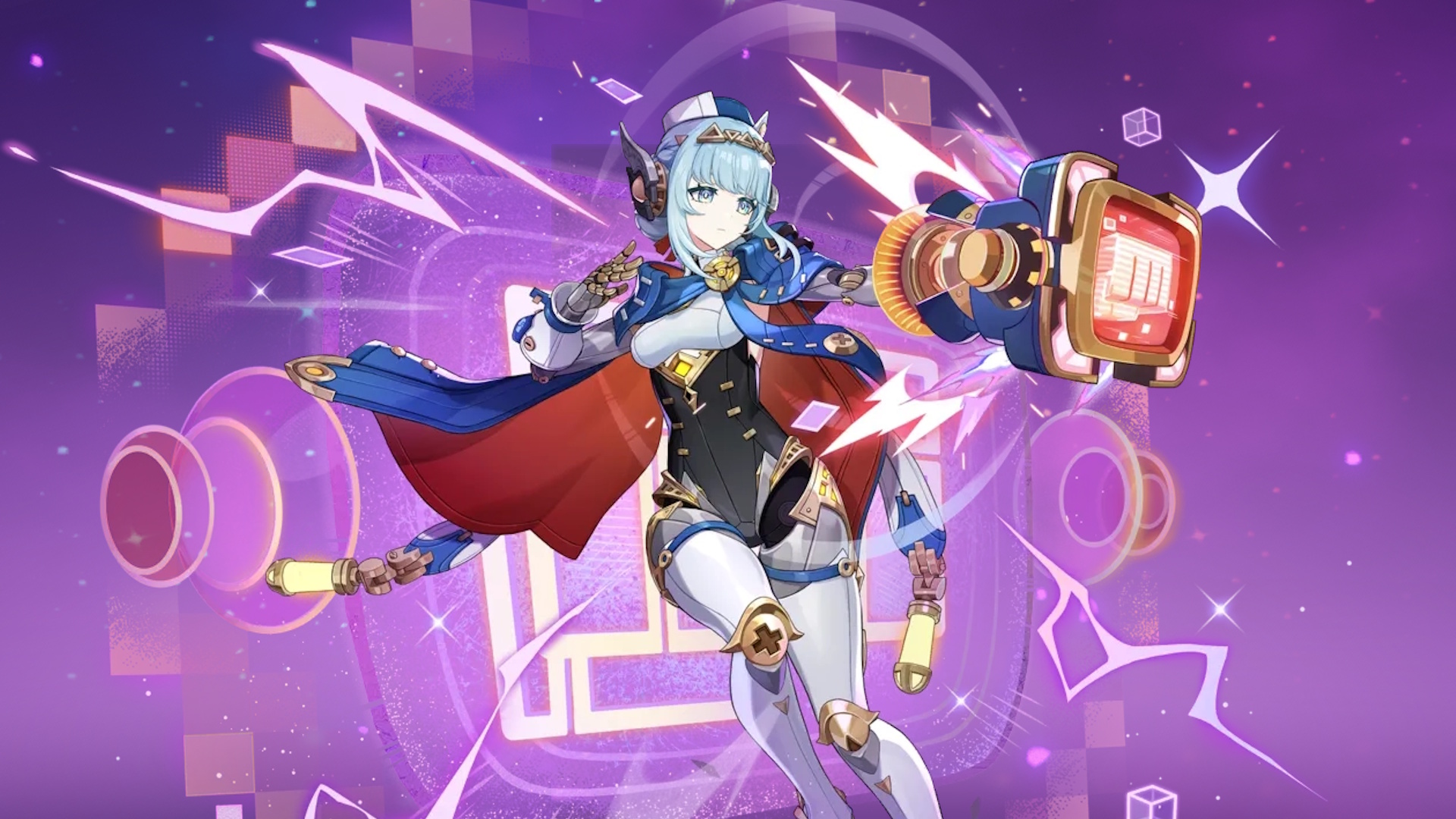
What do you get with a talking ghost ship staffed by a quirky found family of zombies and run by a literal skeleton crew? That sounds like a setup for a Guybrush Threepwood zinger, but it’s actually the good guys in Shadow Gambit: The Cursed Crew. This outstanding stealth tactics game has you managing teams of magic-infused undead pirates on their mission to find a lost treasure, serve justice, fulfill their last regrets, and outwit the skeletal monkey that terrorizes their ship. The developers at Mimimi have delivered a sense of humor that drives the plot, wonderful visual and level design, and a cast of ne’er-do-wells diverse in both abilities and function. All of that means Shadow Gambit: The Cursed Crew sets sail as perhaps the finest stealth tactics game ever made, charting a course for the genre’s future that’s brighter than ever.
Controlling a team of three pirates in real time, your job is to fulfill a few stealthy mission objectives on island maps thick with enemies, civilians, and set piece features. Every one of the eight different islands is an example of the diorama-type design that Mimimi has become known for from Desperados 3 and its Shadow Tactics games. Each of them is a moving tapestry of not just pretty scenery, but stealth puzzles for you to solve and ingenious knots of patrol routes and stationary guards to tactically unravel. It’s also by far the most accessible game I’ve ever played in this genre, with varied mission times allowing shorter play sessions and a lot of easily tweaked difficulty settings broken down by category.
On a basic level, Shadow Gambit follows in the footsteps of the Commandos games: you maneuver your hand-picked crew around in real-time strategy style, using their powers to evade, outwit, and take down guards before (often hilariously) hiding their bodies in convenient bushes and the like. It’s not fully real-time, in that you can also use shadow mode to pause, give an order to each of your crew, and then unpause to execute those commands all at the same time for slick-looking stealth takedowns and rushes using your whole team’s powers at once.
The tales told and the characters that act them out are delightful.
You do all that in service of your mission in the Lost Caribbean, a magical island chain in an alternate version of our own world’s golden age of piracy. This is a strange place, one where the dead rest uneasy and some return to life as undead Cursed – and are inevitably forced into a life of piracy by the Inquisition of the Burning Maiden. That might make it seem like you’re the bad guys, but trust me: the Inquisition are zealous jerks. Take as evidence that nonviolent civilians are perfectly happy with your rotting crew murdering the inquisition and never once snitch on you for it. It’s a setting tailor made for rip-roaring, high-seas adventure, which is just what Shadow Gambit provides.
The frame of the story is simple – a quest to revive the legendary ghost ship Red Marley – but the tales told within it and the characters that act them out are delightful. I was a bit lost in the world’s details at first, but after plowing ahead for a bit I found a lot of delight in the vicious and decidedly unhinged Inquisitor villain, as well as the pirate mythology and deeply strange worldbuilding Shadow Gambit kept throwing at me even hours into the 25ish-hour campaign.
Each island is a place you visit more than once, and they’re intricate enough to justify that. Take Angler’s Bay, a ramshackle town built on an island where a massive, magical leviathan was drawn onto land and slain. The level itself has distinct areas you learn to love or avoid, and those are miniature challenges in and of themselves – the graveyard is one, the open sightlines of the docks another, and the dense, multi-level slums a third. Know your mission is going to go to the docks? Bring a crew that can swim. The slums? One that’s good at moving up and down the rooftops.
Each island is a place you visit more than once, and they’re intricate enough to justify that.
It’s telling that the only real flaw in Shadow Gambit I feel compelled to call out is where it could have reached further, but didn’t. For example, some levels change depending on the mission, and every map has a daytime and nighttime version that play differently – strategies like putting out a torch obviously don’t work during the day. Despite that, I did find myself wanting slightly more dynamic responses from the enemies – I’m not even talking about something on the level of IOI’s Hitman series, but it’d be nice if the enemy deployed extra patrols or was just a bit more cautious after finding dead bodies around.
The tools available to you while you play are a remarkable feat of game design that make it difficult to go back to any other stealth tactics game. You can quickly and easily highlight interactables and guards with a single button. You can see the view cone of any given guard, which is easily understandable as either striped for partial vision or filled for full sight. The most useful of all is the ability to tell exactly who can see a given location or character, drawing a yellow line between their eyes and the spot in question. I never felt like I didn’t have the information I needed to make a plan, and that’s an empowering sensation that’s at the heart of a good stealth tactics experience.
You may not have the feeling of really being there as the mission goes down as you might in a first or third-person game, but you’re still planning and executing the heists, assassinations, and intelligence gathering. It’s a mastermind simulator, one that creates the illusion of being an incredibly clever planner even when you mess up so badly you’ve got to reload a save and try again.
It’s a mastermind simulator that creates the illusion of being an incredibly clever planner, even when you mess up.
Part of that’s down to the fact that, without spoiling anything, the act of quicksaving and reloading is an in-universe power that characters comment on. Incorporating save scumming into the game design pays dividends in the moment-to-moment play because, even when I had a few moments where I forgot to save for a while and had to redo a big chunk of a level, the sheer options available to tackle a scenario make replaying them a lot less repetitious than it can be in other games.
The eight characters available are each uniquely designed and delightfully voice acted. Each character has their own storyline, both in the form of a mission or three and in goofy side stories aboard the Red Marley itself that take place between other missions. I was a pretty big fan of those, working as they did to flesh out the crew, the ship, and the personalities behind each pirate.
What We Said About Desperados 3
Desperados 3 is an uncompromising tactical stealth game that tests your patience and rewards your willingness to experiment. Playing with a charming team of toy soldier-sized assassins in a series of deadly and detailed dioramas is tough and requires a lot of trial and error, but success is more rousing than a whiskey chaser. Dormant for 14 years, in Desperados 3 the series enjoys the most triumphant comeback in the Western genre since Clint Eastwood made Unforgiven. – Tristan Ogilvie, June 12, 2020
Score: 8
Read the full Desperados 3 review
Just as importantly, every one of them behaves slightly differently, from attack speed to whether or not they can swim or climbing, and they each have two unique abilities from the start and are later bolstered by an unlockable upgrade or third power. For instance, our navigator Afia has the power to blink-teleport and freeze guards in time, ship’s doctor Suleidy’s botanical prowess lets her sprout instant cover, and the noble Pinkus von Presswald can use ghostly possession to take control of an enemy.
My favorite, though, is Mr. John Mercury, the ship’s carpenter. He’s a jolly lad who loves to sing, drink, hang out with his fish Sir Reginald, and do otherwise righteously piratical stuff. He’s also able to sink into a nether-dimension and drag enemies down with him. A handy power, especially when Sir Reginald pops out to distract baddies for you.
Also up there is Gaelle, the Red Marley’s master of cannons, whose magical gun can suck up and launch other characters – good or bad. She’s a great example of where Shadow Gambit encourages you to use its variety of strange powers to break its scenarios: Gaelle can just shoot people up walls, skipping entire chunks of levels or bypassing the puzzle around taking down a guard on a tower. Her cannon-based melee attack upgrade is also the source of one of the funniest single animations I’ve seen in a video game: She just shoves it down over a target’s entire body.
In a further brilliant move emphasizing character variety, Shadow Gambit has a system to ensure you don’t get too comfortable with any given crew composition. Each mission earns points toward new upgrades, and the longer a crew member has been out of rotation the more bonus points you get when you finally cash it in and bring them out on a job.
The end of the story, let me be clear, isn’t the end of the fun. After you beat the campaign proper you’re able to keep going to replay missions and finish skipped sidequests, as well as reveal a full list of all the hidden achievements and challenges to hunt down in missions. I enjoyed all that so much that I spent another 10 hours just fooling around in missions I’d previously done to try out challenges and alternate paths – always the mark of a good stealth game – and I’m definitely going back for more secrets and unlocks.






